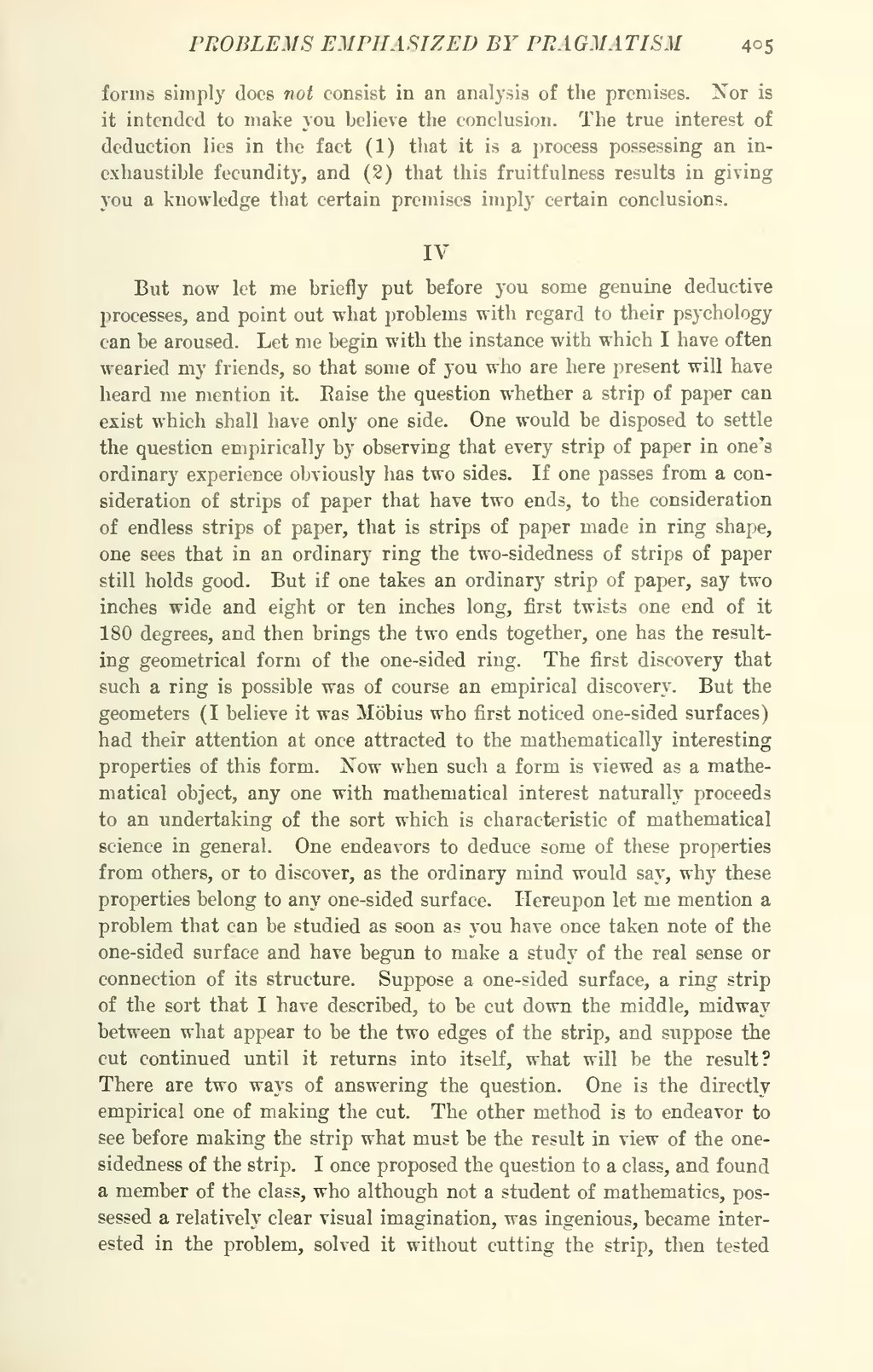forms simply does not consist in an analysis of the premises. Nor is it intended to make you believe the conclusion. The true interest of deduction lies in the fact (1) that it is a process possessing an inexhaustible fecundity, and (2) that this fruitfulness results in giving you a knowledge that certain premises imply certain conclusions.
IV
But now let me briefly put before you some genuine deductive processes, and point out what problems with regard to their psychology can be aroused. Let me begin with the instance with which I have often wearied my friends, so that some of you who are here present will have heard me mention it. Raise the question whether a strip of paper can exist which shall have only one side. One would be disposed to settle the question empirically by observing that every strip of paper in one's ordinary experience obviously has two sides. If one passes from a consideration of strips of paper that have two ends, to the consideration of endless strips of paper, that is strips of paper made in ring shape, one sees that in an ordinary ring the two-sidedness of strips of paper still holds good. But if one takes an ordinary strip of paper, say two inches wide and eight or ten inches long, first twists one end of it 180 degrees, and then brings the two ends together, one has the resulting geometrical form of the one-sided ring. The first discovery that such a ring is possible was of course an empirical discovery. But the geometers (I believe it was Möbius who first noticed one-sided surfaces) had their attention at once attracted to the mathematically interesting properties of this form. Now when such a form is viewed as a mathematical object, any one with mathematical interest naturally proceeds to an undertaking of the sort which is characteristic of mathematical science in general. One endeavors to deduce some of these properties from others, or to discover, as the ordinary mind would say, why these properties belong to any one-sided surface. Hereupon let me mention a problem that can be studied as soon as you have once taken note of the one-sided surface and have begun to make a study of the real sense or connection of its structure. Suppose a one-sided surface, a ring strip of the sort that I have described, to be cut down the middle, midway between what appear to be the two edges of the strip, and suppose the cut continued until it returns into itself, what will be the result? There are two ways of answering the question. One is the directly empirical one of making the cut. The other method is to endeavor to see before making the strip what must be the result in view of the one-sidedness of the strip. I once proposed the question to a class, and found a member of the class, who although not a student of mathematics, possessed a relatively clear visual imagination, was ingenious, became interested in the problem, solved it without cutting the strip, then tested
